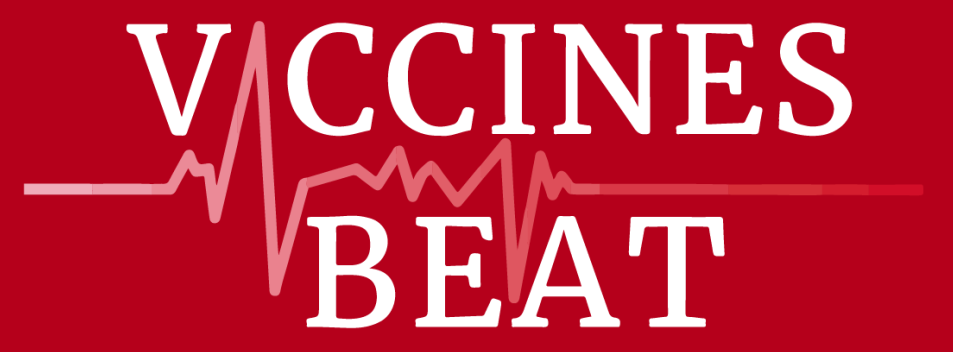“Modeling Reemergence of Vaccine-Eliminated Infectious Diseases Under Declining Vaccination in the US”
Published: JAMA 2025: 24:e256495. https://doi.org/10.1001/jama.2025.6495
Editorial comment: A simulation model was used to assess the importation and dynamic spread of vaccine-preventable infectious diseases across 50 US states and the District of Columbia. The model was parameterized with data on area-specific estimates for demography, population immunity, and infectious disease importation risk. The model evaluated scenarios with different vaccination rates over a 25-year period. Inputs for current childhood vaccination rates were based on 2004-2023 data. The primary outcomes were estimated cases of measles, rubella, poliomyelitis, and diphtheria in the US. Based on estimates from this modeling study, declining childhood vaccination rates will increase the frequency and size of outbreaks of previously eliminated vaccine-preventable infections, eventually leading to their return to endemic levels.
“Modeling the impact of vaccine campaigns on the epidemic transmission dynamics of chikungunya virus outbreaks”
Published: Nat Med (2025). https://doi.org/10.1038/s41591-025-03684-w
Editorial comment: An impressive predictive model of lives saved and averted cases -among many other issues- of Ixchiq during an outbreak, using the last outbreak in Paraguay as an example. The authors found that this deployment strategy would have required 2.2 million doses and averted 34,200 (95% CI 30,500–38,100) cases, including 17,100 (95% CI 15,500–19,000) cases with chronic sequelae and 73 (95% CI 65–81) deaths. This is equivalent to 156 cases, 78 chronic cases and 0.33 deaths averted per 10,000 doses, representing 23% of the cases and deaths that occurred. If, by contrast, only 20% of the population had become vaccinated, then the campaign would have averted 11% of the cases and deaths that occurred. In a scenario in which vaccine deployment was only initiated 3 months after the outbreak was detected, a campaign with 40% coverage would have averted 13% of the cases and deaths that occurred. Assuming a higher vaccine efficacy of 98% results in 31% deaths averted (198 cases and 0.42 deaths averted per 10,000 doses used)”.
”Immunogenicity and Safety of Influenza and COVID-19 Multicomponent Vaccine in Adults ≥50 Years. A Randomized Clinical Trial”
Published: JAMA. Published online May 07, 2025. https://doi.org/10.1001/jama.2025.5646
Editorial comment: In this phase 3 study, including more than 8,000 participants > 50 years of age in the US, mRNA-1083 elicited noninferior immune responses against standard care immunization: licensed standard-dose or high-dose seasonal influenza vaccine (A/H1N1, A/H3N2, B/Victoria, B/Yamagata) co-administered with licensed SARS-CoV-2 (Omicron XBB.1.5) vaccine. The multicomponent vaccine mRNA-1083 had an acceptable tolerability and safety profile.
“BCG Revaccination for the Prevention of Mycobacterium tuberculosis Infection
Published: N Engl J Med 2025; 392:1789-1800. https://doi.org/10.1056/NEJMoa2412381
Editorial comment: In this phase 2b, double-blind, randomized, placebo-controlled trial to evaluate the efficacy of BCG revaccination, as compared with placebo, for the prevention of sustained QFT test conversion (primary end point) in QFT test–negative, human immunodeficiency virus (HIV)–negative adolescents, 1836 participants underwent randomization; 918 received the BCG vaccine, and 917 received placebo. After a median 30 months of follow-up, a sustained QFT test conversion was observed in 62 of 871 participants in the BCG-vaccine group and 59 of 849 participants in the placebo group. The hazard ratio for a sustained QFT test conversion (BCG vaccine vs. placebo) was 1.04 (95% CI, 0.73 to 1.48), for a vaccine efficacy point estimate of −3.8% (95% CI, −48.3 to 27.4). BCG revaccination in QFT–test negative, HIV-negative adolescents did not provide protection from sustained M. tuberculosis infection.
“Clinical presentation and epidemiological assessment of confirmed human mpox cases in DR Congo: a surveillance-based observational study”
Published: Lancet 2025; 40510490: 1666-75. https://doi.org/10.1016/S0140-6736(25)00152-7
Editorial comment: This is a retrospective observational study, analysing PCR-confirmed mpox cases reported from sentinel health zones in seven provinces between Oct 1, 2023, and Sept 31, 2024 in the DR of Congo. Their results indicate concurrent mpox outbreaks in DR Congo, involving younger individuals, a higher proportion of women and girls, and distinct presentations with higher lesion counts and respiratory symptoms compared with clade 2b lineage B.1 outbreaks. The high proportion of infectious complications and case-fatality rates, especially in endemic regions, emphasise the need for timely antibiotic therapy and targeted vaccination to reduce morbidity and mortality.
“Infectious diseases prevention and vaccination in migrants in Latin America: The challenges of transit through the treacherous Darien gap, Panama”
Published: Travel Med Infect Dis 2025; 65: 102839. https://doi.org/10.1016/j.tmaid.2025.102839
Editorial comment: This review highlights several health challenges associated with the growing migration through Panama, with a particular focus on vaccination.
“Country-Specific Data and Priorities for Pertussis in Latin America: Recent Findings From the Global Pertussis Initiative”
Published: Open Forum Infect Dis;12:ofaf154, https://doi.org/10.1093/ofid/ofaf154
Editorial comment: Pertussis continues to pose a considerable public health challenge in Latin America, particularly among infants, and efforts to increase vaccination coverage and strengthen surveillance are crucial to reducing the burden of disease in this region. Indeed, new vaccines reducing carriage and asymptomatic infections are needed on top of increasing coverage of the existing ones.
“Dengue virus infection in travellers after dengue vaccination, Germany 2023-2024”
Published: J Travel Med 2025: taaf037, https://doi.org/10.1093/jtm/taaf037
Editorial comment: Authors acknowledge they DO NOT know the absolute number of vaccinations given to travelers in Germany. Cases may also have been reported without the vaccination status (the information on vaccination is only self-reported by cases in Germany) leading to an underestimation of vaccinated dengue cases.
Vaccinated travelers may be more likely to seek health care because they have a higher general health awareness or are less likely to seek care as they assume that they are protected from DENV due to the vaccination…
JC NOTE: MORE TRAVELERS AND FASE 4 DATA ARE NEEDED REPORTING DATA FROM ALL 4 STs.
“Characterization of serotype-specific Dengue virus T cell inhibition”
Published: J Infect Dis 2025: jiaf241. https://doi.org/10.1093/infdis/jiaf241
Editorial comment: DENV-2 and -3 are associated with more severe clinical disease than DENV-1 and -4; however, no biological explanation for this difference has been previously identified. Authors found that DENV-1 and -4 viral particles and env proteins blunt T cell responses by interfering with proximal TCR signaling while DENV-2 and -3 do not, potentially explaining DENV pathogenic outcomes in primary and secondary infection.
“Immunogenicity and safety of two versus three doses of 9-valent vaccine against Human papillomavirus (HPV) in women with HIV: the Papillon randomized trial”
Published: Clin Infect Dis 2025: ciaf241. https://doi.org/10.1093/cid/ciaf241
Editorial comment: Median age was 35 years, median CD4 count 649/µL, 16 missed M7 visit. In mITT, seroconversion was 97.7% for 2 doses and 97.9% for 3 doses, meeting the predefined non-inferiority criteria. At M7, antibodies titers against all vaccine genotypes were high in both groups (increase by 1.2-2.4 log10). There was no serious adverse event; participants with 3 doses experienced local reaction more frequently (82% versus 60% for 2 doses, p=0.027) with significantly more symptoms and longer duration.
In women with well-controlled HIV, 2 doses of HPV 9v-vaccine is non-inferior to 3 doses in terms of seroconversion and is associated with less reactogenicity
“Evaluating cross-protection: Meningococcal vaccines show effectiveness in gonorrhoea prevention – A systematic review and meta-analysis”
Published: Vaccine. 2025 May 6:56:127188. https://doi.org/10.1016/j.vaccine.2025.127188. Online ahead of print.
Editorial comment: While randomized clinical trials are necessary, the findings of this systematic review and meta-analysis highlight the potential effectiveness of OMV-based vaccines in terms of gonorrhea prevention.
“Could Intravenous Immunoglobulin Be an Alternative Therapy for Treating Infant Botulism in Areas Where Human Botulism Immunoglobulin Is Not Easily Available?: Our Experience in Andalusia, Spain”
Published: Pediatr Infect Dis J 2025; 44: e193-8. https://doi.org/10.1097/INF.0000000000004727
Editorial comment: IVIG may be an effective treatment for shortening the duration of illness in regions that are not readily accessible for HBIG, but further studies are needed. Although IB is rare, when it is suspected, antimicrobial therapy should be avoided as it may exacerbate paralysis by increasing the availability of neurotoxin for absorption.
“Clinical and regulatory development strategies for GBS vaccines intended for maternal immunisation in low- and middle-income countries”
Published: Vaccine 2025; 127131. https://doi.org/10.1016/j.vaccine.2025.127131
Editorial comment: The World Health Organisation (WHO) aims to ensure equitable access to safe, effective, and affordable vaccines of assured quality in LMICs, by facilitating regulatory pathways. An alternate approval pathway, based on safety and an immunological endpoint thought to predict clinical benefit (commonly referred to as serological threshold of risk reduction [SToRR]), is being considered for GBS maternal vaccines. Since this approach is new to many LMICs regulators and policymakers, WHO organized consultative meetings at national, regional, and global levels to discuss the feasibility and potential challenges of approving a GBS vaccine based on safety and immunogenicity data alone. These consultations focused on evidence supporting SToRR, their use as endpoints to infer protection, and post-licensure requirements. The aim of the consultations was to reduce the delay between vaccine development, licensure, policy recommendations and use in high-burden LMICs.
“Helicobacter pylori Vaccine: Mechanism of Pathogenesis, Immune Evasion and Analysis of Vaccine Types”
Published: Vaccines 2025; 13: 526. https://doi.org/10.3390/vaccines13050526
Editorial comment: A fine review that elaborates on the pathogenic mechanism and immune evasion mechanism of H. pylori, as well as various strategies adopted in vaccine development, including whole-cell vaccines, subunit vaccines, DNA vaccines, and live vector vaccines.
“Antibiotics in the global river system arising from human consumption”
Published: PNAS Nexus, Volume 4, Issue 4, April 2025, pgaf096, https://doi.org/10.1093/pnasnexus/pgaf096
Editorial comment: The presence of antibiotics in surface waters poses significant risks to both aquatic ecosystems and human health, primarily due to their toxicity and their role in promoting antimicrobial resistance. Following human consumption and partial metabolism, antibiotic residues are excreted and undergo complex processes of accumulation and degradation as they move from wastewater systems into natural rivers. In a recent predictive modeling study, researchers estimated that approximately 6 million kilometers of rivers worldwide exceed antibiotic concentration thresholds considered safe for ecosystems and resistance prevention, particularly during periods of low streamflow. The main contributors to this pollution were identified as amoxicillin, ceftriaxone, and cefixime. Alarmingly, these findings suggest that human antibiotic consumption alone presents a considerable threat to rivers across all continents, with Southeast Asia experiencing the most extensive impact. With global antibiotic use having increased rapidly over the past 15 years—especially in low- and middle-income countries—there is an urgent need for new strategies to safeguard water quality and protect both human and environmental health.
“BactiVac, the Bacterial Vaccines Network”
Published: Vaccine 2025; 57: 127210. https://doi.org/10.1016/j.vaccine.2025.127210
Editorial comment: BactiVac, the Bacterial Vaccines Network, was established in August 2017 to address this gap. Its mission is to advance vaccine development against global bacterial infections in humans and animals, to reduce disease, death, and antimicrobial resistance, and thereby enhance economic development. BactiVac brings together academia, industry, policymakers and funders from high-income countries (HICs) and low- and middle-income countries (LMICs), in a network of 2060 members from 92 countries, including 51 % from LMICs and 15 % from industry. BactiVac supports vaccine development through Catalyst Project Awards and Catalyst Training Awards. This funding targets bottlenecks and capacity-building in vaccinology, particularly among LMIC early-career researchers.







